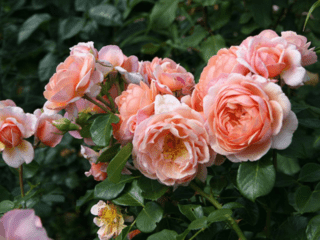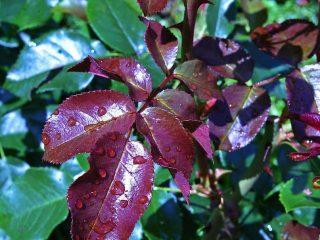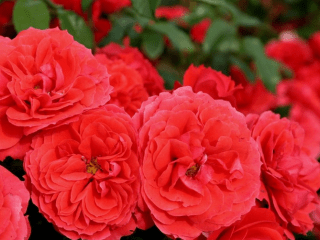Content
Gardeners who grow peonies in their flower gardens may sometimes notice the leaves drying out from tip to middle. Sometimes the whole stem dries up. It looks dry from roots to leaf tips. In this case, you need to sound the alarm and help immediately. But you need to know why peony leaves dry out and how to deal with it in order to preserve their health and beauty.
Why do peonies dry out?
The reasons that cause drying out are completely different. These could be mistakes in caring for the peony, for example, the consequences of non-compliance with the watering regime. Also, dried peonies can often be found in places where there is very little sunlight and the plantings are dense.

Various diseases can cause dryness
To help the flowers in the flowerbed, you need to know what caused the leaves to dry out.
Identifying the cause of drying foliage in the early stages increases the chances of helping the seedling and maintaining its health. This will also protect plants located nearby, since some pathogens are transmitted from neighboring seedlings.
Why does the peony dry out after planting and replanting?
If the peony dries out after planting, this indicates that it is not taking root. Perhaps the flower was planted incorrectly. Therefore, before planting, you need to figure out how to do it correctly.
It is equally important to transplant before the plant enters the active growing season. It is best to replant a peony in late autumn, when the leaves stop transferring nutrients to the root system.
It is also very important to choose the right place for planting. Peonies grow well in an open sunny location. In dense plantings with insufficient air circulation, plants are more susceptible to diseases that cause leaves to dry out.
Lack of nutrients can also cause leaves to dry out. In order for all biological processes to proceed correctly, the plant requires timely application of mineral or organic fertilizers with a sufficient content of macro- and microelements.
If the plant receives too much nitrogen, the roots may burn, the foliage will dry out, and the plant will die.
Why does a peony dry out after flowering?

The drying of leaves at this time of year is the natural end of the growing season.
At the end of the flowering of peonies, their tops continue to accumulate the nutrients necessary for the root, and in the fall these processes come to an end. The drying of leaves at this time of year is the natural end of the growing season. However, sometimes they can dry out immediately after flowering. If peony leaves dry out in August, this may indicate that the plant has become infected. Fungal spores land on the leaves and penetrate inside.Around the end of summer, most pathogenic fungi enter the sporulation phase, which is preceded by the appearance of spots on the leaves and stems.
The most common causative agents of fungal diseases of peony are rust, gray rot, fusarium wilt, and blackleg. The result of the development of these pathogens in plant cells is partial or complete drying of the foliage. This phenomenon is very dangerous and requires immediate intervention, since fungal spores can fall on healthy plants and the disease will spread throughout the flower garden.
A leaf whose tip dries out indicates that the plant has become infected with a fungal disease.
It is necessary to carefully examine the bush and remove the affected parts, and the entire plant must be treated with a fungicide.
What to do if peony leaves dry out
If the first signs of drying of peony foliage are detected, measures must be taken immediately to save the plants. First you need to analyze what mistakes were made in care. If the soil has been waterlogged for a long time, the roots may have begun to rot. It is necessary to water the soil with a fungicide and water it in the future only when it is dry. Lack of watering is less dangerous, since the roots of the peony go deep, but it also contributes to the drying of the foliage. If peonies are planted in a shady place and other plants around interfere with ventilation, it is better to choose a more suitable flower bed for it.
You also need to keep records of fertilizing, when and in what quantities they were applied to the soil. For good development at the beginning of the growing season, peony needs nitrogen, phosphorus and potassium.
Therefore, you need to make deep holes around the stems with a metal rod, and only then water the bush with nutritional compounds.
If signs of fungal infection, spots or plaque are found on the leaves, they should be removed immediately, and the plant itself and the soil underneath should be treated with fungicides. If measures are not taken, the leaves will dry out and the plant will die over time.
It is better to prevent the occurrence of fungal diseases. To do this, after autumn pruning, you need to treat the soil with copper-containing preparations. In the spring, when the growing season begins, it is recommended to spray the leaves and soil with beneficial microorganisms, for example, biological preparations based on Trichoderma and Bacillus subtilis. They immediately attack pathogenic microorganisms that land on the surface of the leaves and keep them healthy.
Conclusion
If your peony leaves have dried up, don’t despair. Many gardeners face this problem. It is important to respond to the first alarm signals and provide timely assistance to the plant, following simple recommendations for care and protection. The plant will reward you with lush and abundant flowering.








